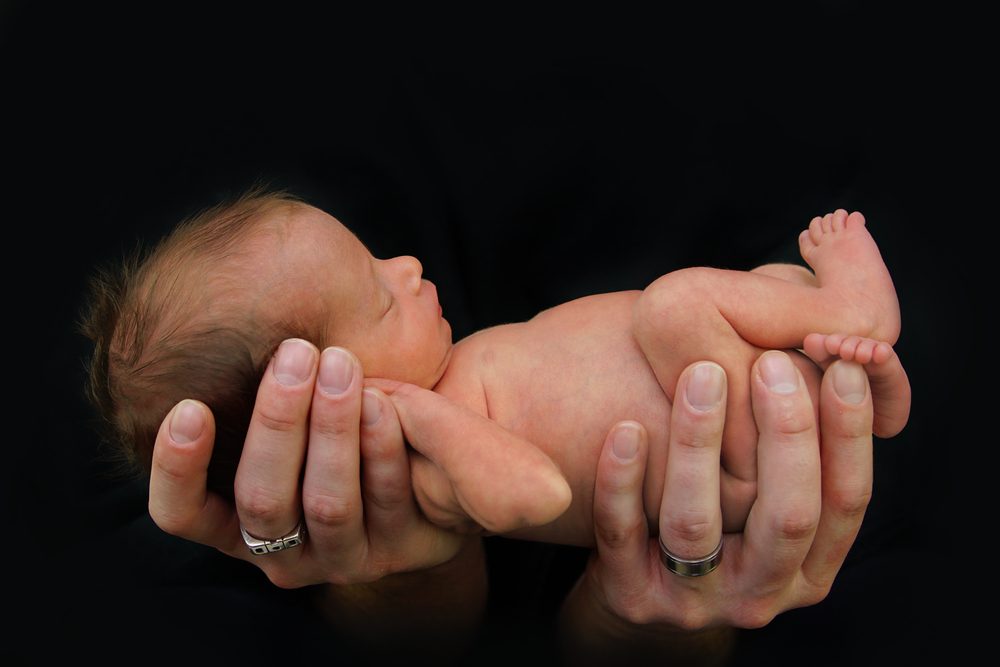Infants with PPHN More Likely to be Readmitted to Hospital Within First Year, Study Reports

Infants with mild or severe forms of persistent pulmonary hypertension of the newborn, who were discharged from hospital, were significantly more likely to be readmitted or die within their first year of life, with the primary cause being congenital abnormalities, a study has reported.
The study, “Morbidity of Persistent Pulmonary Hypertension of the Newborn in the First Year of Life,” was published in the Journal of Pediatrics.
Before a baby is born, the mother supplies oxygen directly to the baby through the umbilical cord, bypassing the lungs. This occurs because the arteries that supply blood to the lungs (pulmonary arteries) in the baby are narrowed, causing the pressure to be naturally high.
When the baby is born, the pulmonary arteries relax and widen, allowing oxygen-carrying blood to flow through the lungs. This switch is known as cardiopulmonary transition.
However, if blood pressure in the pulmonary arteries remains high after birth — a condition called persistent pulmonary hypertension of the newborn (PPHN) — it can give rise to a lack of oxygen, and can be fatal if not treated.
Discuss the latest research in the Pulmonary Hypertension News forums!
Three underlying conditions (etiologies) can lead to PPHN: First, abnormally constricted arteries from either breathing in meconium (fecal material) known as meconium aspiration syndrome (MAS), or respiratory distress syndrome (RDS) due to underdeveloped lungs, or infections; second, remodeling (thickening) of the pulmonary arteries known as idiopathic PPHN; and third, congenital defects such as congenital diaphragmatic hernia (CDH) — a condition where the diaphragm muscle that separates the chest from the abdomen fails to close.
Although the mortality rates and lengths of hospital stay have been well-documented for babies with PPHN, little is known about the mortality and morbidity in those who have been discharged from hospital.
To fill in this gap, researchers assessed the health of babies in California diagnosed with PPHN who were discharged from hospital. The team assessed hospital readmissions and mortality rates during the babies’ first year of life.
Information from the California Office of Statewide Health Planning and Development database was used to identify hospital discharge records between 2005 and 2012, which were linked to birth and death certificates. They also included information on gestational age, sex, birth weight, and ethnicity.
A total of 7,847 infants with PPHN were identified, and of those, 5,370 (68.4%) had received ventilation — the criteria for severe PPHN.
The underlying causes of PPHN were mostly common infections (33.1%), followed by MAS (20.7%), idiopathic PPHN (20.3%), RDS (8.4%), CDH (6.0%), and other congenital anomalies of the respiratory system (4.5%).
During the first year of life, 29% of infants with PPHN were either readmitted to the hospital or had died, compared to 9.9% of infants without PPHN. This number was higher in infants with severe PPHN (33.4%), and lower in those with mild PPHN (20.2%).
The overall mortality rate in infants with PPHN was 7.3%, with an in-hospital mortality rate of 6.5%, and a one-year post-discharge mortality rate of 0.7%.
In addition, the number of hospital readmissions and deaths decreased from 32.2% in 2005 to 24.4% in 2012.
An analysis of the underlying causes of PPHN was also performed and reported as risk ratios (RR) — where a value greater than one indicates an increased risk. RRs were then adjusted for gestational age, sex, birth weight, and ethnicity (aRR).
The highest aRR for hospital readmission or death was found for infants with congenital anomalies of the respiratory system (13.2) and CDH (8.0), compared with infants without PPHN. Those with MAS had an aRR of 4.2, infections were at 3.5, RDS was 2.5, and other diseases were 3.6. The lowest aRR was in patients with idiopathic PPHN (1.7).
A statistical analysis of the data revealed that the primary risk factors for mortality and morbidity in the first year of life, after being discharged from hospital, were the severity and underlying causes of PPHN. In addition, Hispanic ethnicity and small size for age of gestation were identified as significant risk factors as well.
Overall, “the postdischarge morbidity burden of infants with PPHN is large,” the researchers wrote. “Infants with severe PPHN, CDH, or pulmonary anomalies had the highest readmission rates. However, even infants with only mild PPHN or etiologies that are assumed to be short term, such as MAS, sepsis, or RDS, had a significantly increased hospital readmission rates compared with infants without PPHN.”
The team believes that the data obtained “should inform preventive measures and counseling of parents.”







